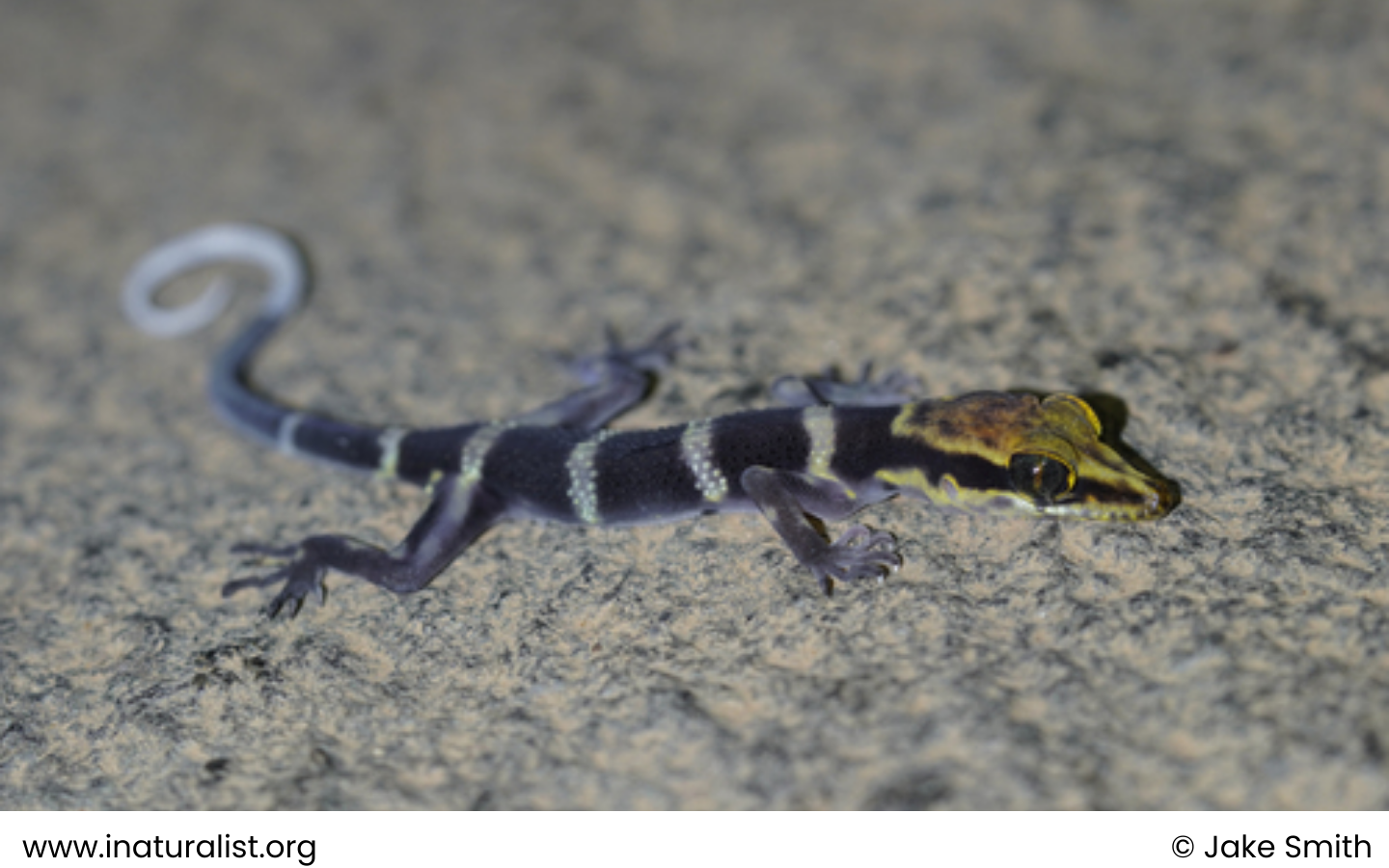
Science name: Cyrtodactylus badenensis – Sang, Orlov & Darevsky, 2006
Taxonomic: Animalia>> Chordata>> Reptilia>> Squamata >> Gekkonidae >> badenensis
Species status: Endemic ; IUCN status: VU (Vunerable)
Description:
Physical characteristics:
Cyrtodactylus badenensis is a medium-sized gecko with a snout-vent length (SVL) ranging from 66.3 mm to 74.1 mm. Its head is slightly flattened, with large round eyes.
The species exhibits 8–10 lower labials and 10–13 upper labials. It has 2 internasal scales, 25–28 rows of ventral scales across the belly, and 18–22 subdigital lamellae on the fourth toe of the hind limb. The scales on the body and tail are arranged in rings and are not expanded at the base of the tail.
Coloration: The dorsal side of the body is dark brown with 7 to 10 irregular white bands running across the back and tail. The head is yellowish-brown, and the belly is white. The species has 5–8 large femoral scales on the thighs, and no femoral pores.
Distribution and habitat:
Elevation: Found at elevations ranging from 50 to 510 meters.
Area: Endemic to southern Vietnam, Cyrtodactylus badenensis is known only from the Ba Den Mountain in Tay Ninh Province. The mountain itself reaches a maximum elevation of 986 meters.
Habitat: This species is nocturnal and saxicolous (rock-dwelling), typically inhabiting steep granite slopes and caves. It is restricted to rocky landscapes, particularly caves and the surrounding rocky areas.
Behaviour and ecology:
Lifestyle: Cyrtodactylus badenensis is primarily nocturnal, foraging at night near the entrances of caves. During the dry season, the species retreats into deeper parts of caves.
Reproduction: This species is oviparous (egg-laying), although specific reproductive behaviors are not well documented.
Diet: It feeds on small insects and other invertebrates found within its habitat.
Conservation and status:
IUCN Red List Category and Criteria: Vulnerable (D2)
Threats: The species faces threats from habitat degradation due to quarrying and ongoing tourist development in the Ba Den Mountain area. Although these activities currently do not pose an immediate threat, they have the potential to escalate and significantly reduce the species’ habitat in the future.
Remarks:
Cyrtodactylus badenensis was first described in 2006 from specimens collected in Ba Den Mountain, Tay Ninh Province, Vietnam, and the species’ name is derived from its type locality.
How to Identify the Greater Sand Plover, Tibetan Sand Plover and Siberian Sand Plover
Identification Differences within the Sand Plover Complex: The sand plover group, which was traditionally divided [...]
Highlights of Cat Tien National Park Reptiles and Amphibian Endemics
Spanning over 71,350 hectares of tropical forests, grasslands, and wetlands, Cat Tien National Park is [...]
Highlights of Cat Tien National Park Mammals in a World Biosphere Reserve
In addition to reptiles and birds, Cat Tien National Park is also rich in mammals, [...]
Kontum Plateau Endemic and Highlight bird
Kontum Plateau Endemic And Highlight Bird species like Chestnut-eared Laughingthrush and top birding routes while [...]
Dalat Plateau Endemic and highlight bird
The Dalat Plateau is a birdwatcher’s paradise, renowned for its exceptional biodiversity and unique highland [...]
Cat Tien National Park Endemic and Highlighted Birds
Covering 71,920 hectares in southern Vietnam, Cat Tien National Park is home to a number [...]